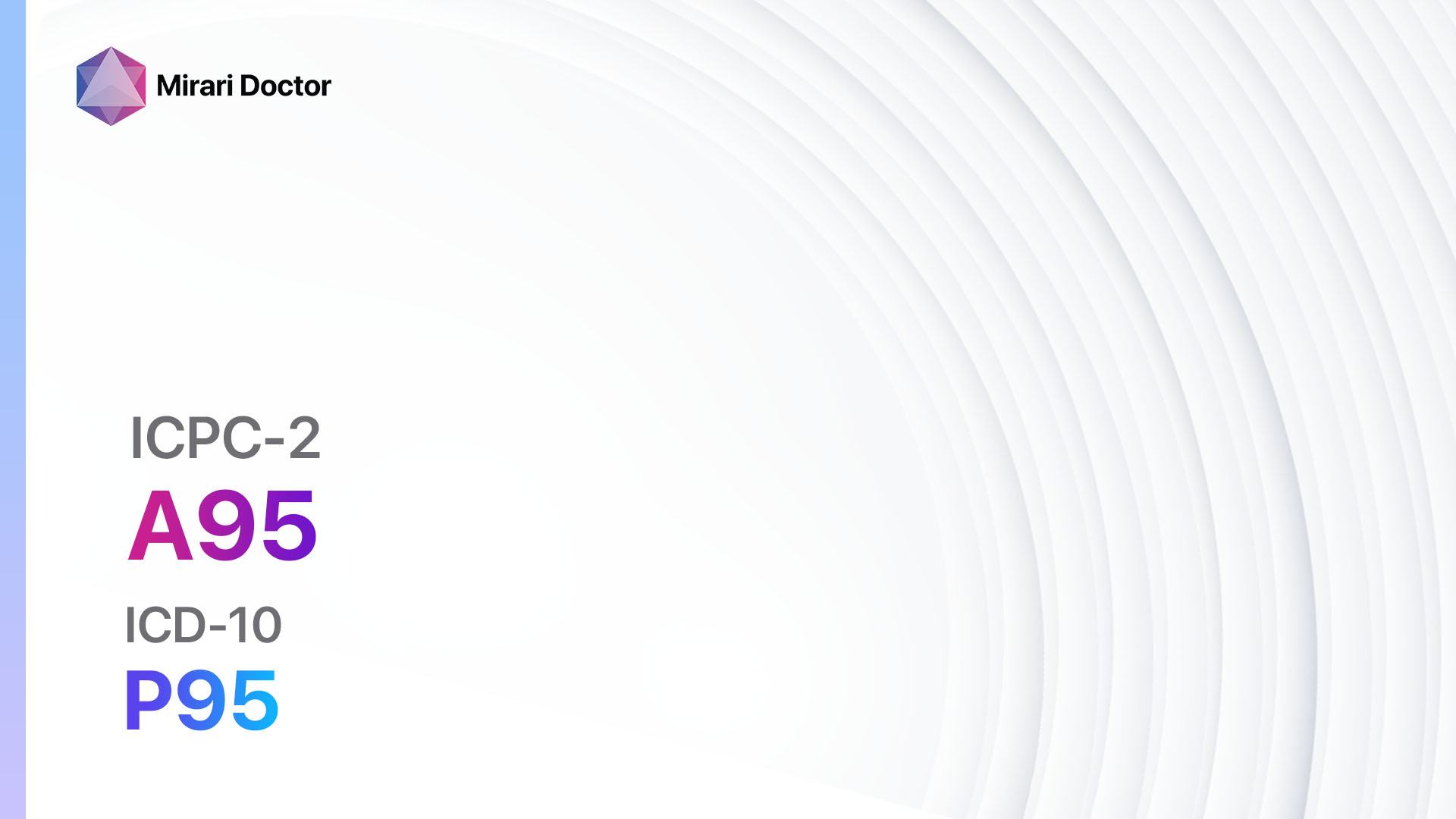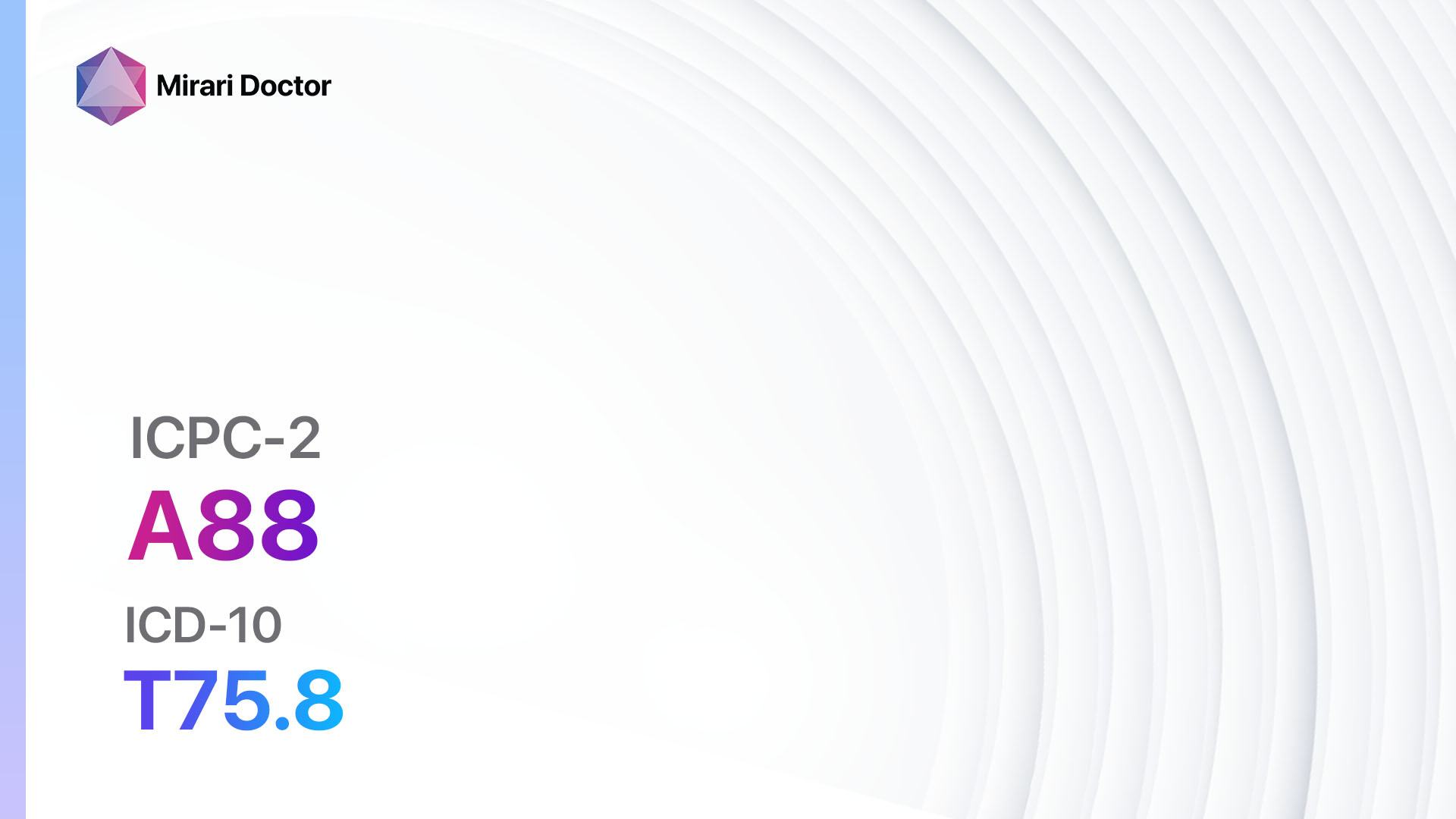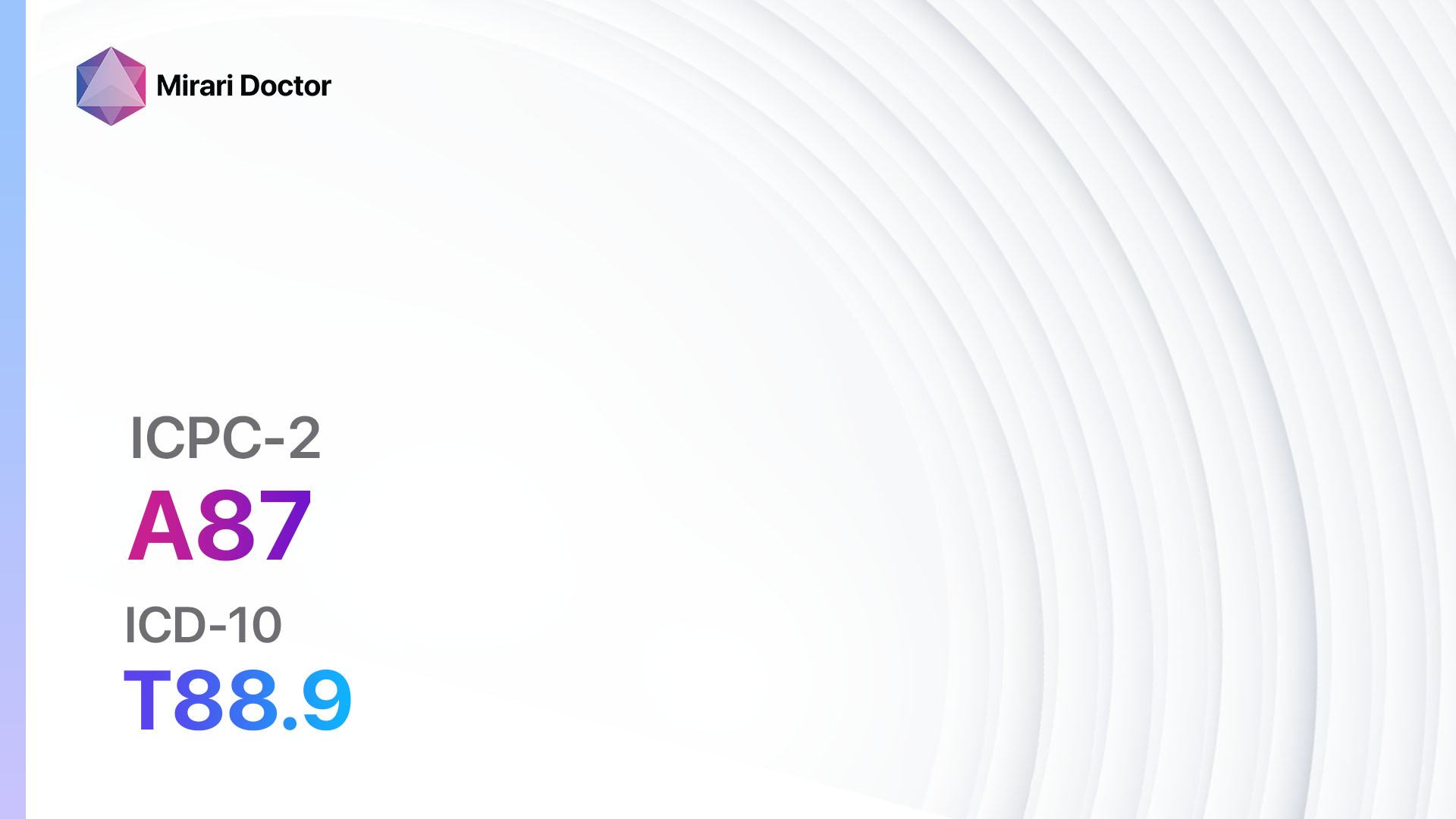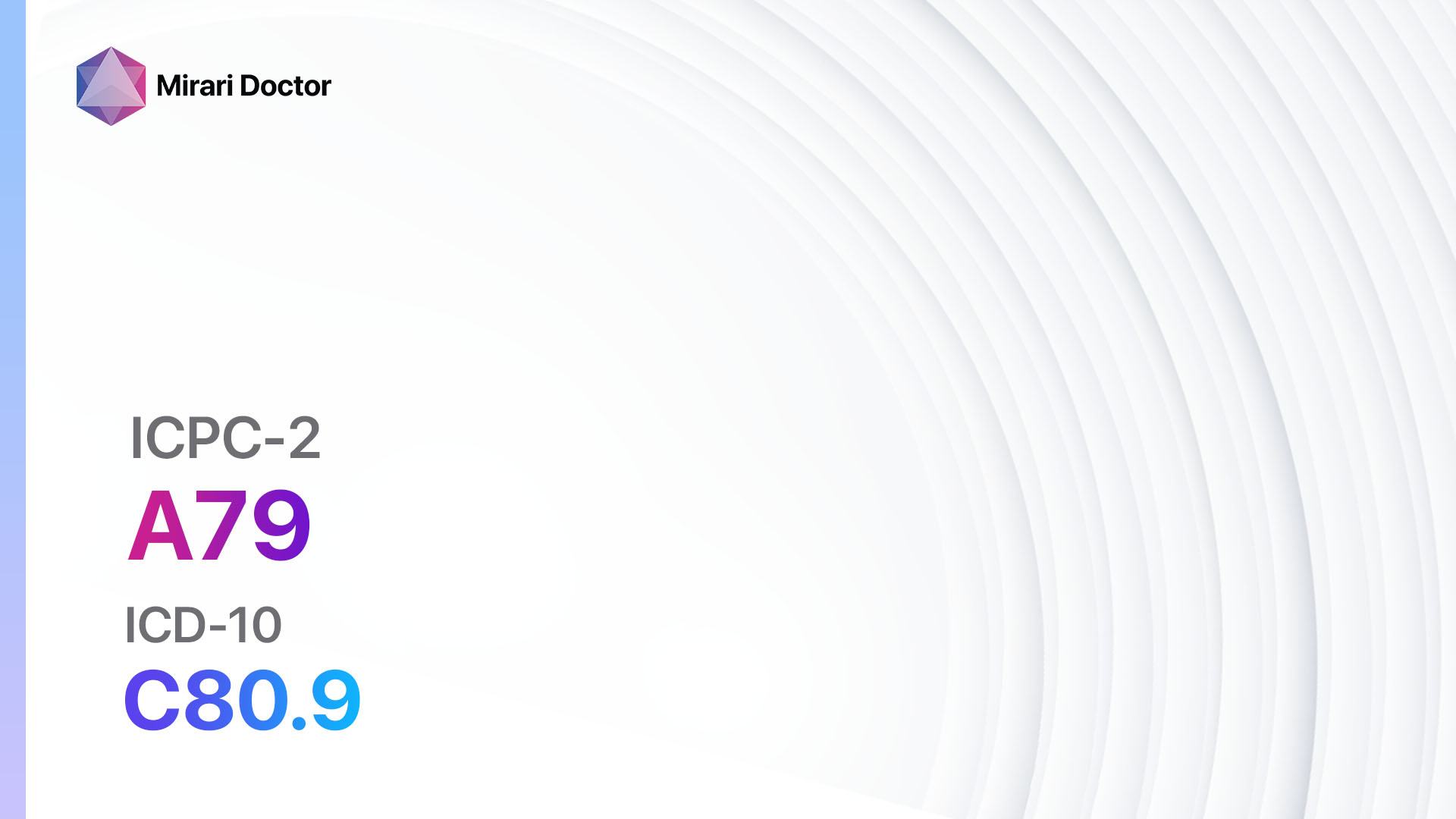
Introduction
Perinatal mortality refers to the death of a fetus or newborn within the first 28 days of life[1]. It is a significant concern in healthcare, as it represents a loss of life and can have a profound impact on families[2]. The aim of this guide is to provide healthcare professionals with a comprehensive understanding of perinatal mortality, including its symptoms, causes, diagnostic steps, possible interventions, and alternative interventions.
Codes
Symptoms
- Fetal distress: Abnormal fetal heart rate, decreased fetal movement, or meconium-stained amniotic fluid[5].
- Preterm labor: Contractions before 37 weeks of gestation[6].
- Intrauterine growth restriction: Poor fetal growth, as measured by ultrasound[7].
- Placental abruption: Vaginal bleeding, abdominal pain and uterine tenderness[8].
- Stillbirth: Absence of fetal movement and heart sounds[9].
Causes
- Maternal factors: Advanced maternal age, chronic medical conditions (e.g., diabetes, hypertension), infections (e.g., syphilis, toxoplasmosis), and substance abuse[10].
- Fetal factors: Chromosomal abnormalities, congenital anomalies, and intrauterine infections.
- Placental factors: Placental insufficiency, placental abruption, and placenta previa.
- Environmental factors: Maternal smoking, exposure to toxins, and inadequate prenatal care.
Diagnostic Steps
Medical History
- Gather information on the patient’s age, medical conditions, and previous pregnancies.
- Assess for risk factors such as advanced maternal age, chronic medical conditions, and substance abuse.
- Inquire about symptoms such as vaginal bleeding, decreased fetal movement, and abdominal pain.
Physical Examination
- Perform a thorough physical examination, including abdominal palpation to assess fetal growth and position.
- Evaluate vital signs and signs of distress, such as tachycardia or hypotension.
- Assess for signs of placental abruption, such as uterine tenderness and vaginal bleeding.
Laboratory Tests
- Complete blood count (CBC): To assess for anemia or infection.
- Blood typing and Rh factor: To determine if the mother is Rh-negative and may require Rh immunoglobulin.
- Infectious disease screening: To check for sexually transmitted infections and other infections that may affect the fetus.
- Genetic testing: To identify chromosomal abnormalities or genetic disorders.
- Coagulation profile: To assess for clotting disorders that may contribute to placental abruption.
Diagnostic Imaging
- Ultrasound: To evaluate fetal growth, amniotic fluid volume, placental position, and detect any structural abnormalities.
- Doppler ultrasound: To assess blood flow in the umbilical artery and other fetal vessels.
- Magnetic resonance imaging (MRI): To provide detailed images of the fetus and placenta in cases where ultrasound is inconclusive.
Other Tests
- Fetal monitoring: Non-stress test (NST) or biophysical profile (BPP) to assess fetal well-being.
- Placental examination: Gross and histopathological examination of the placenta to identify any abnormalities or infections.
- Autopsy: Postmortem examination of the fetus or newborn to determine the cause of death.
Follow-up and Patient Education
- Provide emotional support and counseling to the parents.
- Offer resources for grief counseling and support groups.
- Discuss the importance of prenatal care and healthy lifestyle choices for future pregnancies.
Possible Interventions
Traditional Interventions
Medications:
Top 5 drugs for perinatal mortality:
- Progesterone supplementation:
- Cost: $20-$50 per month.
- Contraindications: Known or suspected pregnancy, active thrombophlebitis, or thromboembolic disorders.
- Side effects: Nausea, breast tenderness, and mood changes.
- Severe side effects: Allergic reactions, blood clots, or liver problems.
- Drug interactions: None reported.
- Warning: Progesterone supplementation should only be used under the guidance of a healthcare professional.
- Antibiotics (e.g., Penicillin, Erythromycin):
- Cost: Varies depending on the specific antibiotic.
- Contraindications: Known allergies or hypersensitivity to the antibiotic.
- Side effects: Nausea, vomiting, diarrhea, or allergic reactions.
- Severe side effects: Severe allergic reactions, liver damage, or blood disorders.
- Drug interactions: Other medications that may interact with the specific antibiotic.
- Warning: Antibiotics should only be used if there is evidence of infection.
- Antenatal corticosteroids (e.g., Betamethasone, Dexamethasone):
- Cost: Varies depending on the specific corticosteroid.
- Contraindications: Known allergies or hypersensitivity to corticosteroids.
- Side effects: Increased blood sugar levels, fluid retention, or mood changes.
- Severe side effects: Adrenal suppression, increased risk of infection, or delayed wound healing.
- Drug interactions: Other medications that may interact with the specific corticosteroid.
- Warning: Antenatal corticosteroids should only be used under the guidance of a healthcare professional.
- Magnesium sulfate:
- Cost: $10-$30 per dose.
- Contraindications: Myasthenia gravis, heart block, or renal failure.
- Side effects: Flushing, sweating, or drowsiness.
- Severe side effects: Respiratory depression, cardiac arrest, or low blood pressure.
- Drug interactions: Other medications that may interact with magnesium sulfate.
- Warning: Magnesium sulfate should only be used under the guidance of a healthcare professional.
- Oxytocin:
- Cost: $10-$30 per dose.
- Contraindications: Hypersensitivity to oxytocin, fetal distress, or abnormal fetal presentation.
- Side effects: Nausea, vomiting, or uterine hyperstimulation.
- Severe side effects: Uterine rupture, water intoxication, or severe allergic reactions.
- Drug interactions: Other medications that may interact with oxytocin.
- Warning: Oxytocin should only be used under the guidance of a healthcare professional.
Alternative Drugs:
- Nifedipine: A calcium channel blocker that may be used to prevent preterm labor.
- Indomethacin: A nonsteroidal anti-inflammatory drug (NSAID) that may be used to delay preterm labor.
- Cerclage: A surgical procedure in which the cervix is stitched closed to prevent preterm labor.
- Intravenous immunoglobulin (IVIG): May be used in cases of recurrent pregnancy loss due to immune factors.
- Intrauterine transfusion: A procedure in which blood is transfused directly into the fetus in cases of severe fetal anemia.
Surgical Procedures:
- Cesarean section: May be performed in cases of fetal distress or other complications that require immediate delivery.
- Dilation and curettage (D&C): May be performed to remove any remaining tissue after a miscarriage or stillbirth.
- Cerclage: A surgical procedure in which the cervix is stitched closed to prevent preterm labor.
Alternative Interventions
- Acupuncture: May help reduce stress and promote relaxation during pregnancy. Cost: $60-$120 per session.
- Chiropractic care: May help alleviate musculoskeletal discomfort during pregnancy. Cost: $50-$200 per session.
- Massage therapy: May help reduce muscle tension and promote relaxation during pregnancy. Cost: $50-$150 per session.
- Yoga: May help improve flexibility, strength, and relaxation during pregnancy. Cost: $10-$20 per class.
- Herbal supplements: Some herbal supplements, such as red raspberry leaf tea, may be used to support uterine health during pregnancy. Cost: Varies depending on the specific supplement.
Lifestyle Interventions
- Healthy diet: Encourage a balanced diet rich in fruits, vegetables, whole grains, and lean proteins.
- Regular exercise: Encourage moderate-intensity exercise, such as walking or swimming, with the approval of a healthcare professional.
- Smoking cessation: Advise pregnant individuals to quit smoking to reduce the risk of complications.
- Alcohol and drug avoidance: Educate pregnant individuals about the risks of alcohol and drug use during pregnancy.
- Stress management: Encourage stress-reducing activities, such as meditation, deep breathing exercises, or prenatal yoga.
It is important to note that the cost ranges provided are approximate and may vary depending on the location and availability of the interventions. It is recommended to consult with a healthcare professional for personalized advice and guidance.
Mirari Cold Plasma Alternative Intervention
Understanding Mirari Cold Plasma
- Safe and Non-Invasive Treatment: Mirari Cold Plasma is a safe and non-invasive treatment option for various skin conditions. It does not require incisions, minimizing the risk of scarring, bleeding, or tissue damage.
- Efficient Extraction of Foreign Bodies: Mirari Cold Plasma facilitates the removal of foreign bodies from the skin by degrading and dissociating organic matter, allowing easier access and extraction.
- Pain Reduction and Comfort: Mirari Cold Plasma has a local analgesic effect, providing pain relief during the treatment, making it more comfortable for the patient.
- Reduced Risk of Infection: Mirari Cold Plasma has antimicrobial properties, effectively killing bacteria and reducing the risk of infection.
- Accelerated Healing and Minimal Scarring: Mirari Cold Plasma stimulates wound healing and tissue regeneration, reducing healing time and minimizing the formation of scars.
Mirari Cold Plasma Prescription
Video instructions for using Mirari Cold Plasma Device – A95 Perinatal mortality (ICD-10:P95)
| Mild | Moderate | Severe |
| Mode setting: 1 (Infection) Location: 0 (Localized) Morning: 15 minutes, Evening: 15 minutes | Mode setting: 1 (Infection) Location: 0 (Localized) Morning: 30 minutes, Lunch: 30 minutes, Evening: 30 minutes | Mode setting: 1 (Infection) Location: 0 (Localized) Morning: 30 minutes, Lunch: 30 minutes, Evening: 30 minutes |
| Mode setting: 2 (Wound Healing) Location: 0 (Localized) Morning: 15 minutes, Evening: 15 minutes | Mode setting: 2 (Wound Healing) Location: 0 (Localized) Morning: 30 minutes, Lunch: 30 minutes, Evening: 30 minutes | Mode setting: 2 (Wound Healing) Location: 0 (Localized) Morning: 30 minutes, Lunch: 30 minutes, Evening: 30 minutes |
| Mode setting: 7 (Immunotherapy) Location: 1 (Sacrum) Morning: 15 minutes, Evening: 15 minutes | Mode setting: 7 (Immunotherapy) Location: 1 (Sacrum) Morning: 30 minutes, Lunch: 30 minutes, Evening: 30 minutes | Mode setting: 7 (Immunotherapy) Location: 1 (Sacrum) Morning: 30 minutes, Lunch: 30 minutes, Evening: 30 minutes |
| Total Morning: 45 minutes approx. $7.50 USD, Evening: 45 minutes approx. $7.50 USD | Total Morning: 90 minutes approx. $15 USD, Lunch: 90 minutes approx. $15 USD, Evening: 90 minutes approx. $15 USD, | Total Morning: 90 minutes approx. $15 USD, Lunch: 90 minutes approx. $15 USD, Evening: 90 minutes approx. $15 USD, |
| Usual treatment for 7-60 days approx. $105 USD – $900 USD | Usual treatment for 6-8 weeks approx. $1,890USD – $2,520 USD | Usual treatment for 3-6 months approx. $4,050 USD – $8,100 USD |
 |
|
Use the Mirari Cold Plasma device to treat Perinatal mortality effectively.
WARNING: MIRARI COLD PLASMA IS DESIGNED FOR THE HUMAN BODY WITHOUT ANY ARTIFICIAL OR THIRD PARTY PRODUCTS. USE OF OTHER PRODUCTS IN COMBINATION WITH MIRARI COLD PLASMA MAY CAUSE UNPREDICTABLE EFFECTS, HARM OR INJURY. PLEASE CONSULT A MEDICAL PROFESSIONAL BEFORE COMBINING ANY OTHER PRODUCTS WITH USE OF MIRARI.
Step 1: Cleanse the Skin
- Start by cleaning the affected area of the skin with a gentle cleanser or mild soap and water. Gently pat the area dry with a clean towel.
Step 2: Prepare the Mirari Cold Plasma device
- Ensure that the Mirari Cold Plasma device is fully charged or has fresh batteries as per the manufacturer’s instructions. Make sure the device is clean and in good working condition.
- Switch on the Mirari device using the power button or by following the specific instructions provided with the device.
- Some Mirari devices may have adjustable settings for intensity or treatment duration. Follow the manufacturer’s instructions to select the appropriate settings based on your needs and the recommended guidelines.
Step 3: Apply the Device
- Place the Mirari device in direct contact with the affected area of the skin. Gently glide or hold the device over the skin surface, ensuring even coverage of the area experiencing.
- Slowly move the Mirari device in a circular motion or follow a specific pattern as indicated in the user manual. This helps ensure thorough treatment coverage.
Step 4: Monitor and Assess:
- Keep track of your progress and evaluate the effectiveness of the Mirari device in managing your Perinatal mortality. If you have any concerns or notice any adverse reactions, consult with your health care professional.
Note
This guide is for informational purposes only and should not replace the advice of a medical professional. Always consult with your healthcare provider or a qualified medical professional for personal advice, diagnosis, or treatment. Do not solely rely on the information presented here for decisions about your health. Use of this information is at your own risk. The authors of this guide, nor any associated entities or platforms, are not responsible for any potential adverse effects or outcomes based on the content.
Mirari Cold Plasma System Disclaimer
- Purpose: The Mirari Cold Plasma System is a Class 2 medical device designed for use by trained healthcare professionals. It is registered for use in Thailand and Vietnam. It is not intended for use outside of these locations.
- Informational Use: The content and information provided with the device are for educational and informational purposes only. They are not a substitute for professional medical advice or care.
- Variable Outcomes: While the device is approved for specific uses, individual outcomes can differ. We do not assert or guarantee specific medical outcomes.
- Consultation: Prior to utilizing the device or making decisions based on its content, it is essential to consult with a Certified Mirari Tele-Therapist and your medical healthcare provider regarding specific protocols.
- Liability: By using this device, users are acknowledging and accepting all potential risks. Neither the manufacturer nor the distributor will be held accountable for any adverse reactions, injuries, or damages stemming from its use.
- Geographical Availability: This device has received approval for designated purposes by the Thai and Vietnam FDA. As of now, outside of Thailand and Vietnam, the Mirari Cold Plasma System is not available for purchase or use.
References
- World Health Organization. (2016). Making every baby count: audit and review of stillbirths and neonatal deaths. World Health Organization.
- Heazell, A. E., Siassakos, D., Blencowe, H., Burden, C., Bhutta, Z. A., Cacciatore, J., … & Lancet Ending Preventable Stillbirths Series study group. (2016). Stillbirths: economic and psychosocial consequences. The Lancet, 387(10018), 604-616.
- WONCA International Classification Committee. (1998). ICPC-2: International Classification of Primary Care. Oxford University Press, USA.
- World Health Organization. (2019). International statistical classification of diseases and related health problems (11th ed.).
- American College of Obstetricians and Gynecologists. (2019). ACOG Practice Bulletin No. 145: antepartum fetal surveillance. Obstetrics and gynecology, 124(1), 182-192.
- Goldenberg, R. L., Culhane, J. F., Iams, J. D., & Romero, R. (2008). Epidemiology and causes of preterm birth. The lancet, 371(9606), 75-84.
- American College of Obstetricians and Gynecologists. (2019). ACOG Practice Bulletin No. 204: fetal growth restriction. Obstetrics and gynecology, 133(2), e97-e109.
- Tikkanen, M. (2011). Placental abruption: epidemiology, risk factors and consequences. Acta obstetricia et gynecologica Scandinavica, 90(2), 140-149.
- Silver, R. M. (2007). Fetal death. Obstetrics & Gynecology, 109(1), 153-167.
- Flenady, V., Koopmans, L., Middleton, P., Frøen, J. F., Smith, G. C., Gibbons, K., … & Ezzati, M. (2011). Major risk factors for stillbirth in high-income countries: a systematic review and meta-analysis. The lancet, 377(9774), 1331-1340.
Related articles
Made in USA



























